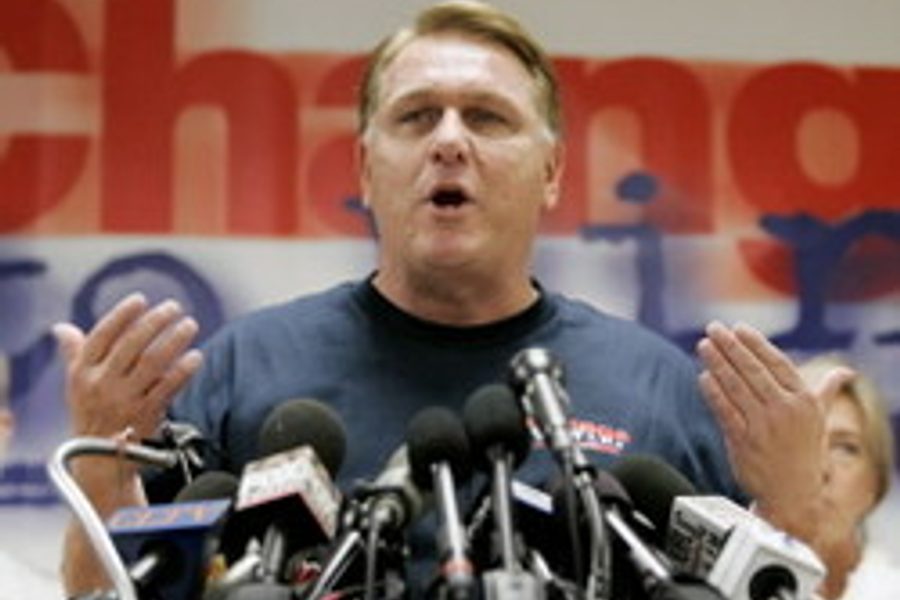
TDU-backed Sandy Pope pulls in only 17% of votes
James P. Hoffa won a fourth term as president of the Teamsters union, according to official results released Friday by the federal election monitor. In an election with the lowest turnout since members won the right to elect top officers directly, Hoffa defeated two opponents with 60 percent of the votes.
Fred Gegare, a union vice president who had formerly supported Hoffa, came in second with 23 percent of the votes. Local union president Sandy Pope, supported by the long-time rank-and-file reform group, Teamsters for a Democratic Union, won 17 percent. In previous elections, the TDU candidate attracted around 35 percent of voters. Although TDU’s candidate fared worse this time, Hoffa’s support also declined, even though his slate won all five regions. After serving one year of his five-year term, he will have matched the length of time in office of his father, James R. Hoffa.
Pope had run a campaign critical of Hoffa for making contract concessions and arguing for more mobilization of members in politics and defense of their contracts, as well as more aggressive organizing. On its website, TDU said:
We got members involved and it made a difference. In areas where Sandy Pope supporters passed out leaflets and made phone calls, voter turnout was higher, the majority of Teamsters voted for change, and our campaign vote was much higher.
Just look at New York and New Jersey. Our campaign targeted 13 locals totaling 40,000 Teamsters in brewery, school bus drivers, grocery, UPS, freight, and more. And we won the overall vote in these locals thanks to a very active campaign!
Sandy Pope visited 29 local union areas in the Central Region, covering 150,000 Teamsters. In these locals, the majority of members voted for change.
Where our campaign organization on the ground was weaker, Hoffa did better, and the anti-Hoffa vote gravitated to Gegare’s slate box. But where members were active, we often won, in locals in Memphis, Nashville, Cincinnati, Akron, Norther California, St. Louis, Charlotte, Spokane, Portland, Iowa, New York, New Jersey and others.
In an analysis posted on the Labor Notes website, TDU national organizer Ken Paff attributed Hoffa’s victory to “the power of incumbency” and the financial resources that result from it. Also, after years of corporate attacks and declining union power, Paff argued, many Teamster members were losing hope. Pope’s decision to run without a slate to focus on potential discontent with Hoffa was complicated by Gegare’s decision to run (with a full slate) and the inability of the two challengers — with much different histories in and visions for the union — to form an alliance.
“Gegare stayed in the race even after it was clear he could not win,” Paff wrote. “Instead of dropping out, he turned his fire against Pope. He campaigned in her stronger areas and targeted her for attack. Gegare played right into Hoffaís hands: he offered voters the ìsaferî alternative to Hoffa, who was also directing his fire against Pope. He had a slate, and that is what members were used to voting for. And his slate’s presence kept Hoffaís running mates on the ballot and saved Hoffa from running on his own.”
Paff also emphasized tha Pope did well in areas where TDU and her campaign had stronger organization, such as parts of New York and New Jersey (Pope’s home territory), the central region and Tennessee, as well as in big national units, such as freight. Paff acknowledged that “the Hoffa administration often says the right things about Occupy Wall Street, Wisconsin, and the 99%. We need to move beyond press releases and into grassroots mobilization.”
“Now that this election is completed we will intensify our efforts in the fight for all working families,” Hoffa said in an official statement. “The Teamsters strength is in organizing the unorganized, fighting for strong healthcare, good wages, secure retirement, and holding employers and politicians accountable.”
David Moberg, a former senior editor of In These Times, was on staff with the magazine from when it began publishing in 1976 until his passing in July 2022. Before joining In These Times, he completed his work for a Ph.D. in anthropology at the University of Chicago and worked for Newsweek. He received fellowships from the John D. and Catherine T. MacArthur Foundation and the Nation Institute for research on the new global economy.








